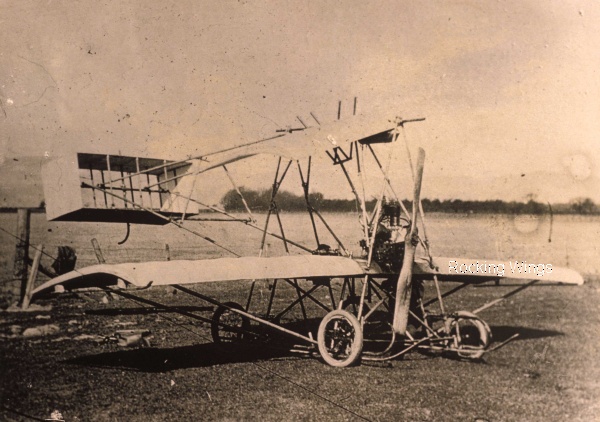On the 30th of June 1915, Flight sub-Lieutenant Preston Watson of the Royal Naval Air Service was flying Caudron G.3 3266 between Eastchurch in Kent and Eastbourne, East Sussex when his aeroplane “…suddenly dived from a great height to the ground,” and crashed in Dunlye field, a few miles from the Cross-in-Hand Hotel near Heathfield. Watson was killed in the incident.
What actually happened to cause the Caudron to crash has never been fully explained; some hypothesised that the aircraft suffered structural failure, since a wing was found in an adjoining field. Engine failure was also suggested as a possible cause of the crash. Watson's RNAS casualty card offers no clues, merely stating the time and place he was killed.
This lack of conclusive information surrounding his accidental death is indicative of a recurring theme in Preston Watson's aviation career. Little of his indigenous aircraft construction prior to his joining the Royal Naval Air Service can be accurately verified. What is known for certain about Watson is that he was an enthusiastic supporter of aviation who had thought up an entirely original, although in practice not entirely successful means of controlling an aeroplane in flight.
Based on his own pet theories, Watson commenced construction on the first of his indigenous aeroplanes around 1908 or 1909, but even after the fitting of a French manufactured engine the resulting machine remained steadfastly on the ground. He went on to build two more aircraft using his rocking wing lateral control method: his second aeroplane between 1910 and 1912 and the last two years later, the former being the first of Watson's aeroplanes to have achieved sustained powered flight.
There is some speculation that Watson might have built a glider and flown it prior to building his aeroplanes, but apart from supposition and presumption on the part of so-called eyewitnesses, no evidence of a Watson glider has been found.
Read about the Watson “Wright Type” glider here
Read about Watson's first aeroplane here
Read about Watson's second aeroplane here
Read about Watson's third aeroplane here
